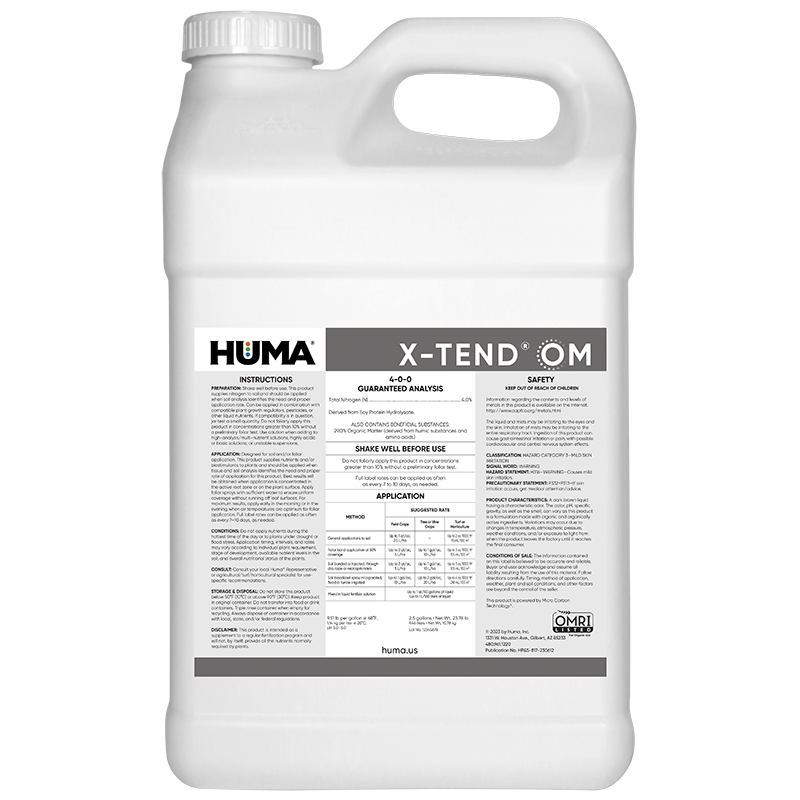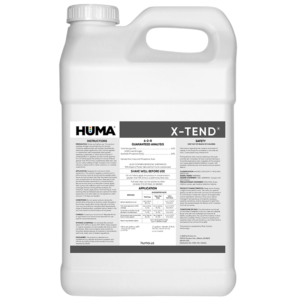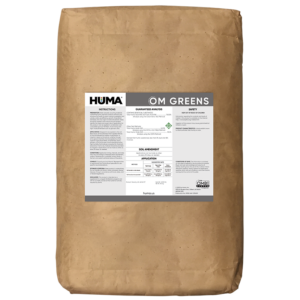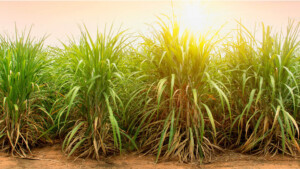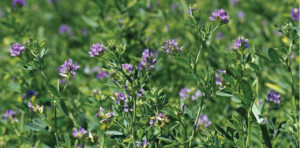FAQs
Related Videos
Huma Minute – X-Tend Enhancing Fertilizer with Cory Ritter
Huma Minute - X-Tend Enhancing Fertilizer with Cory Ritter - Huma Inc.
Learn More
Huma Minute – X-Tend on Soybeans with Steve Walmsley – Huma Inc.
Huma Mid-South Regional Sales Manager Steve Walmsley reports on a field trial with Huma X-Tend on Soybeans.
Learn More
Related Products
Related Case Studies

Huma® Fertil Soil® Increases Corn Yield With 260% ROI
Background Application of Fertil Soil® to soils in combination with other Huma® fertilizers at various locations previously resulted in crops with improved plant growth and higher yields. Applying Fertil Soil® with grower standard products or as a single product application to soil and leaves could also impact results. Objective The focus of this study was
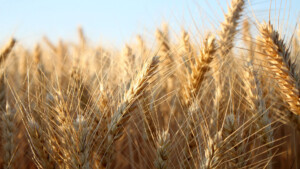
X-Tend® B With Micro Carbon Technology® Improves Barley Yield and Net Income: Year 3
Background Enhanced Efficiency Fertilizer (EEF) additives can improve crop production. Humates have been shown to improve crop yield. The Huma® EEF additive X-Tend® B is a concentrated Micro Carbon Technology® product derived from humates with high levels of organic acids and nutrients that is formulated to be blended in liquid fertilizers or to be impregnated

Humic Products Increase Iowa Corn Yield
Background Scientific research shows humic and fulvic acids can have a biostimulant effect on plant root growth and mass, nutrient availability and uptake, and crop yield and quality. Objective The objective of this study was to compare and contrast the immediate effects that three types of humic products from Huma®, Inc. have on corn yield.
Related Blog Posts

The Big, the Bold, and the Bill: What BBB Means for Ag
The Big Beautiful Bill was signed into law on July 4. At 887 pages, it certainly is big. As for being beautiful, that will be in the eyes of the beholders. Like most budget bills, depending on your point of view, the contents may resemble that famous Clint Eastwood film, “The Good, The Bad, and The Ugly.” But what does BBB specifically mean for agriculture?

Celebrating the Life of Jason Garcia
We lost Jason Garcia this week, his life cut short way too soon. When Jason joined BHN as an agronomist in 2019, it was apparent early on that we had hired a special guy. Jason was ENTHUSIASTIC! Always. You just couldn’t have a conversation with Jason without hearing a great story about someone in his

This Week in Ag #11
You shouldn’t judge a book by its cover, but you can judge seed products by their bag covers. There’s lots of telling information on them. Just look at this bag of seeds going on my farm. The bag itself prominently features the brand name and logo (AgriGold), type of product (corn), the actual product name (A647-79VT2PRO) and

